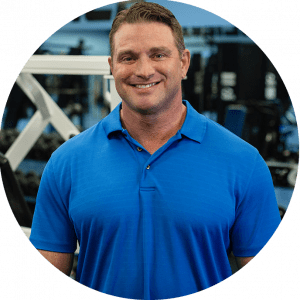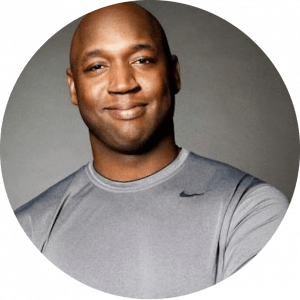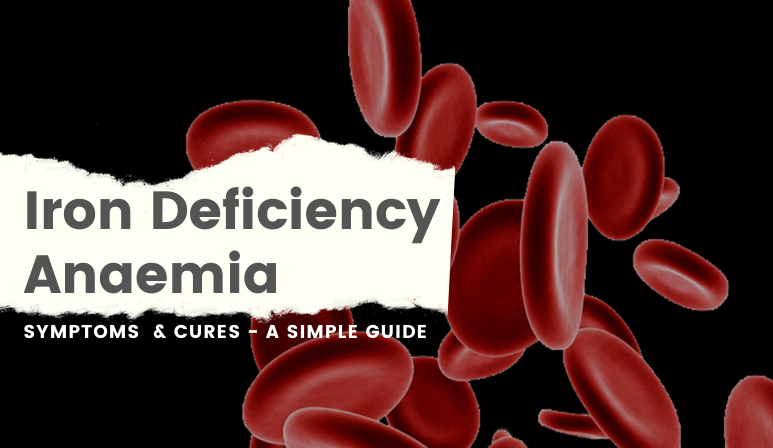
Quick Jump To List
This guide will tell you everything you need to know about iron deficiency anaemia. Firstly, it will explain the role of iron in the body. Secondly, it will give an overview of iron deficiency and iron deficiency anaemia.
Thirdly, it will answer some common questions on iron deficiency and iron deficiency anaemia. Fourthly, it will give some guidance on how to boost your iron intake naturally. Fifthly, it will give you some points to think about if you decide you want to try using an iron supplement.
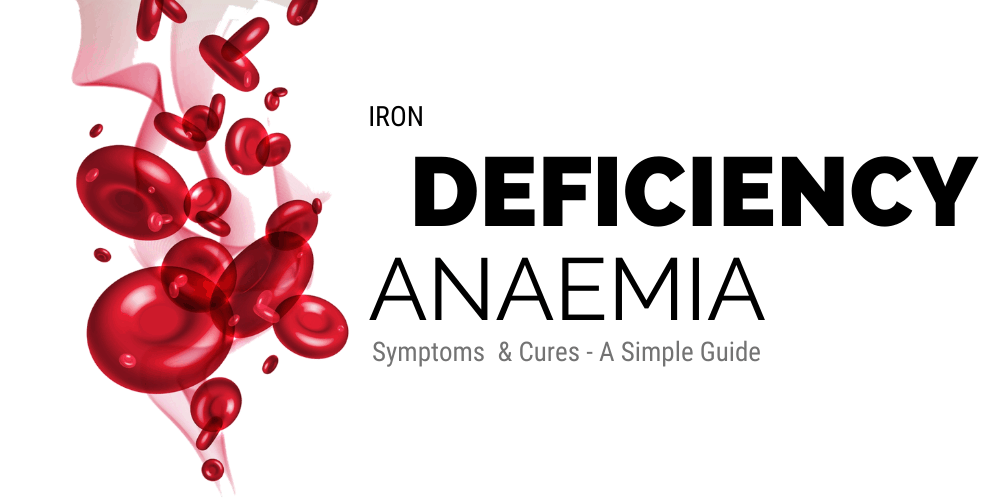
The importance of iron for the body
The main purpose of iron is to make haemoglobin. This is a protein found in red blood cells. It carries oxygen from the lungs around the body. Iron is also used to make myoglobin. This is also a protein found in red blood cells. It carries oxygen to the muscles.
The amount of iron your body needs to function depends mostly on your age, gender and lifestyle. It can, however, also depend on your body’s ability to process iron effectively. This can be negatively impacted by medication (e.g. antacids) and/or certain medical conditions (e.g. Celiac disease and Crohn’s disease).
For completeness, blood loss of any sort can increase the body’s need for iron. This isn’t likely to be an issue after a cut finger but it may be one after surgery. If your doctor doesn’t mention this, then you might want to check with them for reassurance and guidance. This is particularly important if you have a high need for iron. You can get your nutrition levels checked by a functional or integrative medicine doctor or by your GP practice if unsure

How much iron do we need?
According to the NHS, men aged 19+ and women over 50 need 8.7mg of iron per day and women between 19 and 50 need 14.8mg a day. There are different guidelines for children up to the age of 18. These vary greatly according to their development stage.
Please note, however, that these are only general guidelines. People with active lifestyles may need more than this.
Iron consumption and plant-based diets
There are two main forms of iron. These are heme iron and non-heme iron. Heme iron comes from animal foods (i.e. meat, poultry and fish), non-heme iron comes from plants. Heme iron is more easily absorbed by the body than non-heme iron.
This means that people on plant-based diets should assume that they are going to need anything up to double the amount of iron they would have needed if they ate animal products.
Depending on your needs, this may be achievable through eating lots of iron-rich foods. These include beans, peas, lentils, dark leafy greens, nuts, seeds, tofu and many dried fruits (especially apricots).
It may help to consume these with foods rich in Vitamin C to aid iron absorption. Citrus fruits are the obvious option, but there are plenty of others including potatoes and sweet potatoes (especially with their skin on), red and green peppers, tomatoes and broccoli.
Realistically, however, you may need to take an iron supplement, especially if you have a particularly high need for iron.
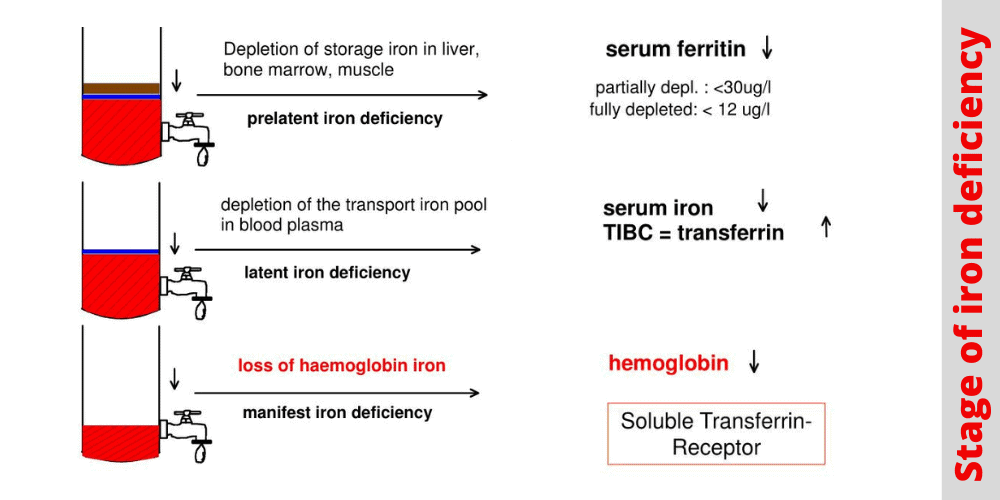
The three stages of iron deficiency
The three stages of iron deficiency are pre-latent, latent and iron deficiency anaemia. In the pre-latent stage, the body compensates for the lack of dietary iron by using iron which is already stored in the body. This comes mainly from the muscles and liver but there is also iron in the spleen and bone marrow.
In the latent stage, these stores have been depleted, but haemoglobin is still within acceptable levels so the body is still functioning normally. Over time, however, the haemoglobin will be used up and as its levels are depleted, you will start to experience the symptoms of iron deficiency anaemia.

The general symptoms of iron deficiency anaemia
When you have iron deficiency anaemia, you have a shortage of haemoglobin. This means that your blood is unable to transport oxygen around the body effectively. Therefore, the most obvious symptoms of iron deficiency anaemia tend to be similar to the symptoms of altitude sickness. These include tiredness, shortage of breath and dizziness/nausea.
The lack of oxygen negatively impacts the body’s ability to perform basic functions such as to grow and develop, to repair itself and to ward off infection. Therefore less obvious symptoms of iron deficiency anaemia may include hair loss and brittle nails, slow recovery from minor injuries (e.g. cuts) and a tendency to fall ill easily.
Please note that although iron deficiency anaemia is far and away the most common form of anaemia, there are many other potential causes of anaemia. As always, if you are experiencing severe and/or prolonged symptoms, always consult a doctor.
What can happen if iron deficiency anaemia is left untreated?
If iron deficiency anaemia is left untreated it can lead to serious issues with the heart and lungs, make you more vulnerable to injury and/or illness and lead to complications in pregnancy/nursing.
Iron deficiency and periods
During your period you will lose blood. This means that you will lose the nutrients which are in the blood, including iron. If you lose too much iron, you will experience the symptoms of iron deficiency anaemia.
This is a particular risk if:
- You have a heavy flow
- You’re going through puberty
- You lead a particularly active lifestyle
The short-term nature of menstrual-related iron deficiency anaemia means that it often makes sense just to treat the symptoms with an iron supplement.
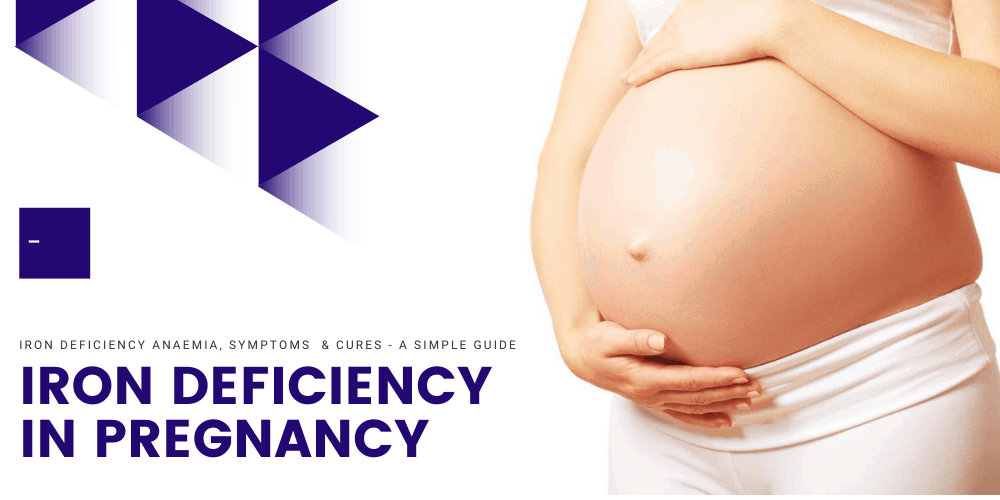
Iron deficiency in pregnancy
During pregnancy, you’re “eating for two”. This means that you need enough nutrients for two. Since the whole point of pregnancy is for a baby to develop, the baby needs a lot of iron. Your body is also developing, in a sense, to accommodate the baby and its future needs (e.g. milk). That creates even more need for iron. It’s therefore highly surprising that iron deficiency anaemia is a common problem in pregnancy.
Although pregnancy is relatively short-term (even if it doesn’t feel like it at the time), it’s much longer than a period. This means that it is feasible to address it through diet, at least in theory. In practice, the realities of pregnancy mean that an iron supplement can be a much easier option.
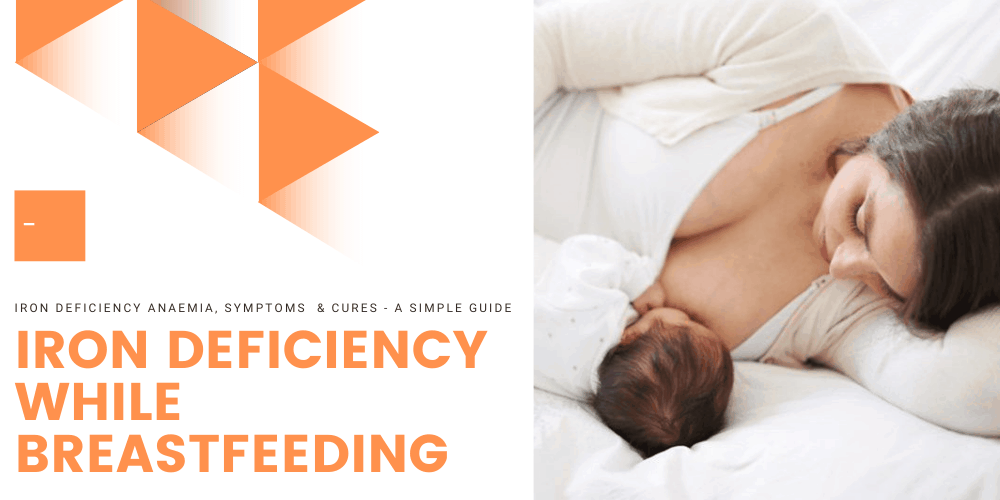
Iron deficiency while breastfeeding
The first three months of a baby’s life are often known as the “fourth trimester”, for good reason. The baby is still developing at a rapid rate and your body will be adjusting to the baby being out of it. This means that the need for iron is particularly high. It will stay high for as long as you continue to breastfeed.
Similar comments apply here as for pregnancy. In theory, you can address your need for iron through diet. In practice, with everything a baby brings, it can be much easier just to take an iron supplement.

Iron deficiency and heart palpitations
When you have iron deficiency, your blood carries less oxygen. This means that your heart has to pump harder and/or faster to keep a minimal level of oxygen flowing through your body. This can result in it becoming overworked and hence lead to heart palpitations.
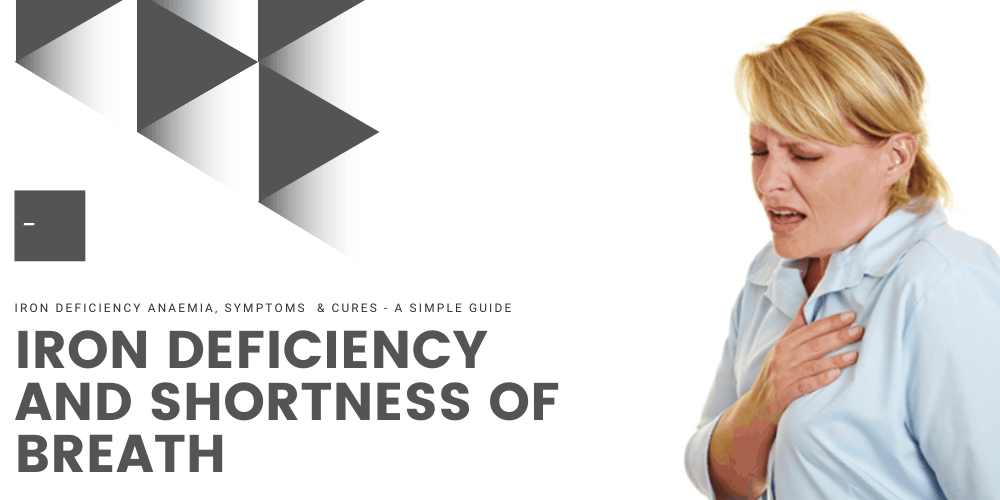
Iron deficiency and shortness of breath
Similar comments apply here. When you have iron deficiency your cells have a reduced capacity for oxygen. Your heart will do the best it can, but even so, there may simply not be enough oxygen to go around (literally or figuratively), thus you may experience shortness of breath.
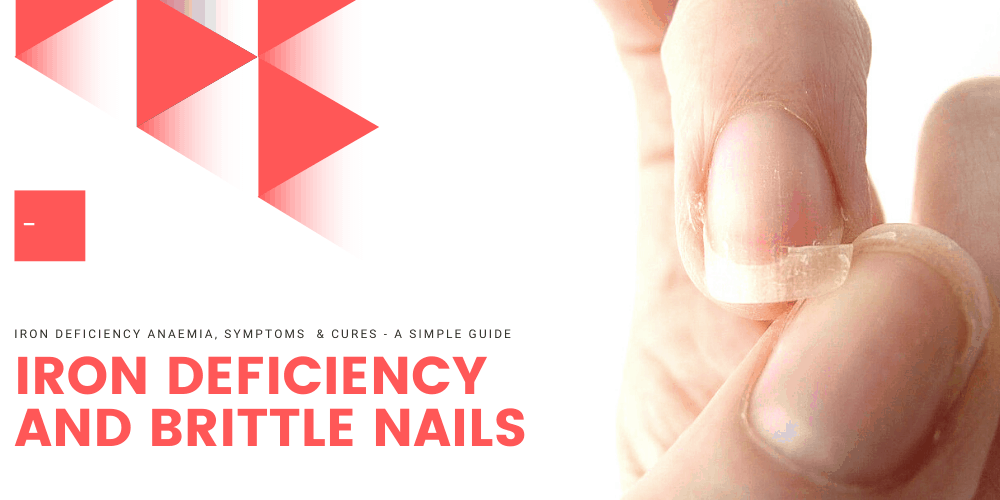
Iron deficiency and brittle nails (what your nails tell you)
Iron deficiency can cause brittle nails. It is, however, not the only cause and certainly not the most common one.
If your nails are dry and brittle and you are showing other symptoms of iron deficiency, then it’s likely that your brittle nails are also a symptom of iron deficiency anaemia. If, however, you’re not showing other symptoms of iron deficiency, then it’s likely that the cause is something else.
The most common cause of dry and brittle nails is age. There is no cure for this, but proper nail care can keep the symptoms manageable. In extreme cases, you may wish to consider a keratin supplement.
Other causes of dry and brittle nails include hypothyroidism and Raynaud’s syndrome. These both need medical intervention.
If your nails are soft and brittle, then they have too much moisture. There are two main culprits for this. The first is cleaning products, especially detergents, and the second is nail polish remover.
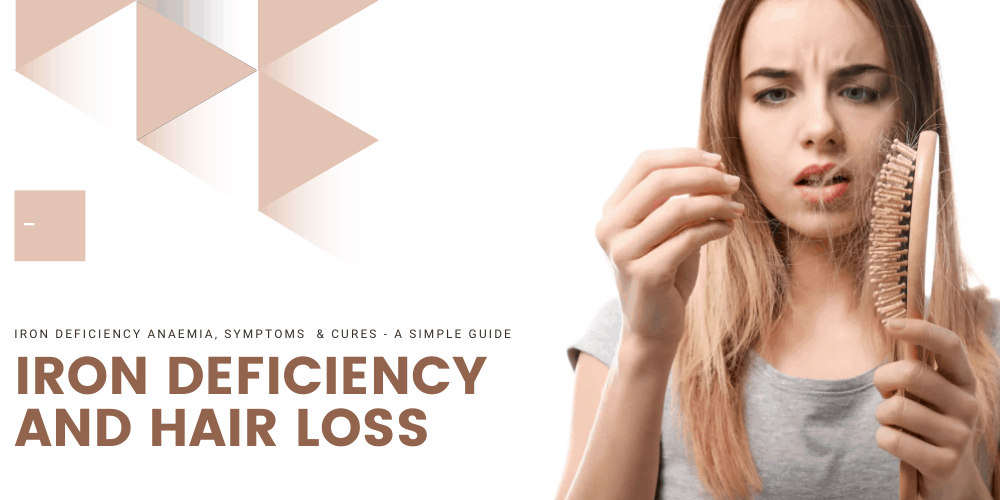
Iron deficiency and hair loss (what your hair tells you) what can you do?
Similar comments apply to your hair. If you want a full head of lustrous locks, then you need to live an all-round healthy lifestyle (and frankly it helps to have genetics on your side especially if you’re a man).
If you have issues with your hair, including hair loss, and you are showing other symptoms of iron deficiency then there is a good chance that the issues with your hair are also caused by iron deficiency anaemia.
If, however, you are not showing other signs of iron deficiency, then it’s unlikely that iron deficiency anaemia is the issue. That’s the good news. The bad news is that there are all kinds of other issues it could be.
If you know you’re living an unhealthy lifestyle, then there’s a very good chance that cleaning up your act will also improve the condition of your hair. If, by contrast, you believe that you’re living a healthy lifestyle but are still having more than the occasional “bad hair day”, then it’s advisable to see a doctor.

Can iron deficiency cause acne?
No, quite the opposite. Iron deficiency tends to make your skin dry. As with your nails and hair, if you have dry skin and are showing other symptoms of iron deficiency, then it’s likely that your dry skin is also a symptom of iron deficiency anaemia. If you’re not, then it’s probably something else.
Try taking a look at your lifestyle. In addition to thinking about diet, exercise, sleep and, let’s be honest, bad habits, take a look at any skincare products you use. No matter how good they are in general, they may be the wrong choice for you.
The reason why acne can be linked with iron deficiency is that it’s often treated with zinc. Iron and zinc are both relatively hard to digest. When they are taken together they compete with each other in the digestive system. If zinc comes out on top, then it may negatively impact on iron absorption (and vice versa).
How can I boost my iron naturally?
The richest source of heme iron is the liver. This is also generally a budget-friendly option. It isn’t, however, necessarily to everyone’s taste. Red meats may be a more palatable option. If you’re on a budget, try looking for tougher cuts and putting them in a slow cooker.
If you eat poultry then turkey is a good source of iron, especially if you opt for the dark meat. Remove the skin if you want to make it a healthier option. Chicken is also a decent source of iron. If you eat fish then plain old canned sardines are a decent, and budget-friendly, source of iron.
If you eat a plant-based diet, then you may need to consume more non-heme iron to get the nutrients you need. The good news, however, is that many sources of non-heme iron are very budget-friendly. Vegans can get their iron from beans, peas, lentils, dark leafy greens, nuts, seeds, tofu and many dried fruits (especially apricots).
You can help your body absorb iron by taking it with foods which are rich in Vitamin C. These include citrus fruits, potatoes and sweet potatoes (especially with their skin on), red and green peppers, tomatoes and broccoli.
Try to avoid consuming calcium (or at least significant quantities of calcium), when you have iron-rich foods. Also, go easy on caffeine and alcohol. These can both hinder iron absorption.

How to choose the best iron supplement for you
If you’re thinking about taking an iron supplement, the two key points to consider are the dose and the format. If you’re looking specifically for a liquid iron supplement, then you’ll also want to consider the flavour.
The main formats for iron supplements are tablets, capsules and liquids. If you eat a plant-based diet, it’s important to check the ingredients on capsules very carefully. Even these days a lot of them still use gelatine. The good news is that it’s now much easier to get vegan-friendly capsules. You can also get soluble tablets and patches.
Iron supplements and constipation
Iron can be hard to digest. This means that increasing your intake can leave you feeling a bit “bunged up”. You can help avoid this by increasing the amount of fibre you eat. If you eat more fibre, you’ll also need more liquid to help wash it down. Try to stick to water, or at least, other healthy drinks.
Exercise boosts your metabolism. This includes your digestive system. Since increasing your iron intake should give your energy a boost, take advantage of it to get yourself moving literally and that will often help to get yourself moving figuratively.
If you experience mild constipation, you can try rubbing your tummy in a clockwise direction. This basically massages the digestive tract. Essentially, you’re trying to push the food along. If you have more severe symptoms, you might want to try senna tea. If your constipation is really severe, then get a laxative from your pharmacist.
In short
Iron deficiency anaemia is one of the world’s most common health problems, but you don’t have to let it get you down. You may be able to get all the iron you need through your diet. If, however, that’s not a feasible option for you, then there are plenty of great iron supplements on the market. What’s more, these days, a decent number of them are vegan-friendly.










